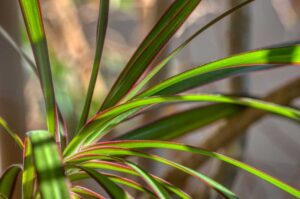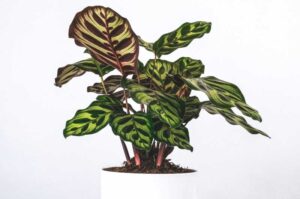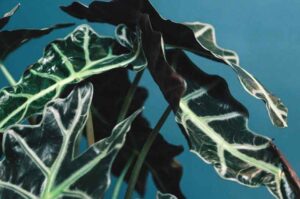Can You Overwater By Bottom Watering?
Have you ever heard of bottom watering.? If not, you are at the right place. This article talks in detail about bottom watering the houseplants.
Almost all the parents of houseplants love to experiment with their plant babies. One of the common experiments is variation in watering techniques. The standard method of watering that everyone is aware of is top watering. But today, we will discuss bottom watering and its benefits and other related topics. Those plant owners who are worried that bottom watering may lead to over-watering, you have your answer here.
The simple answer is no; you can’t overwater your plants by bottom watering. Because here the soil is soaking water, as per its requirement due to the capillary action. However, if the soil is not well draining(too much clayey), then there is a risk of overwatering when bottom watering is done for a long period of time.
Read below to enrich your knowledge about the ninja tips and upkeep of house plants through bottom watering!
What is bottom watering?
As the name indicates, bottom watering means watering your plants from the bottom through capillary action. In this method, plants are kept in a water container for some time and allowed to soak water.

In contrast, in top watering, you water the plants from the top using a faucet, watering can, etc.
Interestingly, bottom watering is one of the best and most effective methods of watering houseplants. The next question that may come to your mind is, can you completely replace top watering and opt for bottom watering exclusively? Well, the quick answer is no. Why no? This answer is further explained in this post.
Can you overwater by bottom watering?
Undoubtedly bottom watering is one of the most effective techniques for watering your houseplants. But still, some of you may have doubts if there are chances of overwatering your houseplants especially if you are a chronic over waterer!
Well, the simple answer is no. It’s so because bottom watering is the most controlled way of watering plants. The reason is the soil itself sucks water as per its requirement, instead of you pouring excess water on the plants aimlessly.
Since the soil is soaking in the water as per the micropores present in it, the chances of overwatering reduce to the minimum.
However, if you allow your plants to stand in water for a longer duration, and the soil is not well draining and too clayey, there are chances of overwatering and eventually roots started to rot.
Hence we can conclude that bottom watering does not cause over-watering if done carefully, keeping a check on time and quality of the soil.
Steps to follow while bottom watering your houseplants
Though bottom watering is not tricky, doing it right makes all the difference. Here is the step-by-step procedure for you to bottom water your houseplants appropriately:
- The first step is to check if your pot has drainage holes ensuring the soil suck the water up. Also, ensure the soil is well aerated to allow the soaking up of water.
- The next step is to find a large container/tray that can easily occupy your pot. Fill a few inches or half of it with water. Place your pot in the container.
- Let it rest for 10 minutes; after that, check with your finger if the plant has started soaking water or not.
- If you find the soil dry or if it has soaked the water quickly, let it stand in water for a little longer.
- But remember to keep an eye on the plant; as soon as the water is about to reach the surface of the soil, you can remove excess water from the container. Allowing the plant to stand for too long can lead to root rot due to overwatering.
- Do not pour the excess water back into the plant; instead, throw it away. Excess water means your plant doesn’t need more water now; it has already soaked enough.
If you regularly bottom water your plants, here’s a tip for you: You need to top water your plant occasionally to wash out any mineral and salt build-up.
How much water do you require for bottom watering?
The amount of water you need for bottom watering depends on your container. Fill the container with water, and if the water is not reaching the top of the pot you are good to go.
However, it is recommended to allow water to reach half of the pot. You can add more water if required. Alternatively, you can place the pot in the container and later you can add water. It’s all up to you, there’s no rocket science involved here.
What type of water is best for bottom watering?
There are different types of water you can use to water your plants. However, water quality affects plant growth. Water from different sources, such as well water, tap water, pool water, mineral water, etc., has different nutrients and minerals. So not all types of water are ideal for your house plant.
Now the question arises which type of water is best for bottom watering? The best kind of water to use for bottom watering is rainwater. Because it is the purest form of water.
Pros and cons of bottom watering
Bottom watering is beneficial for almost all house plants. However, like any other method, it has its pros and cons. Let’s take a look:
Pros
- Plants have complete control over their watering needs because we soak them in water. So they take up the required water instead of us pouring water on them without having the slightest idea of their needs.
- Bottom watering is an intelligent way of evenly soaking the soil in water.
- It minimizes the chance of over-watering.
- Bottom watering helps to get stronger roots as the roots tend to grow towards the water source.
- Dried plants get an enriched water drink.
- Many plants are extra sensitive to water pouring on their stems and leaves. You can save your plants from accidentally pouring water over leaves and stems. It results in water sitting in leaves or stem crevices, leading to rot.
- Lastly, it reduces pests’ chances of attacking plants because the soil’s surface is not wet.
Cons
- It is a time-consuming task.
- If you are into forgetting things often, bottom watering is not for you. Unless you set a reminder each time, you water the plants.
- Bottom watering doesn’t allow excess minerals and salts to wash out as in top watering. It is a disadvantage for plants that are extra sensitive to the buildup of salts and minerals. In such a case, you have to avoid bottom watering at all.
Conclusion
Thus, you can use a combination of both bottom watering and top watering to ensure healthy plant growth. Both the watering options are equally good as long as you are not harming the plants.
Keep a few things in mind, such as pots that allow proper drainage and well-aerated soil to prevent overwatering. And as soon as you notice any signs of overwatering, such as root rot or any fungal infection, immediately repot your plant with fresh potting mix.
If you are new plant parents, you’ll have to be patient before you master the art of bottom watering.
Good luck.






